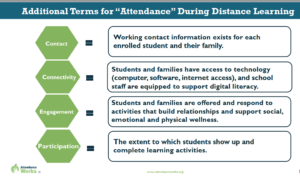“The transition back to school for the 2020-21 school year will be one like no other in recent history. Education may occur in classrooms, virtually or as a combination. School transitions in and out of classrooms may occur more than once.”
Category: Tier 1,2&3 Strategies addressing absenteeism
Aug 02
Showing up matters!
This year more than ever before, there is a great need to invest in the transition back to school for both students and families. Every student and family experienced some level of stress, while others have experienced deep trauma from family illness, death and loss of income. During the 2020-2021 school year, education may occur in classrooms, virtually or as a combination. School transitions in and out of classrooms may occur more than once. New research shows that many students could begin the new school year significantly behind in their academic learning. As protests over racism demonstrate, our public institutions, including schools have not adequately addressed the systemic barriers that limit access and equitable opportunities.
Feb 18
Wait, what? Now I have to teach attendance too?
Every adult in school plays a role in teaching about attendance. Raising awareness that every school day matters is part of everyone’s task at school. AttendanceWorks has a great resource to infuse attendance into daily instruction.
Dec 10
Addressing chronic absenteeism resource below uses helpful strategies for Tier 1, 2, & 3.
Check out Tier 1 strategy on p. 20 on Restorative Discipline and Tier 2 strategies on p. 21 “Early Warning Systems” and on p. 23 “Mentors” Read full article






